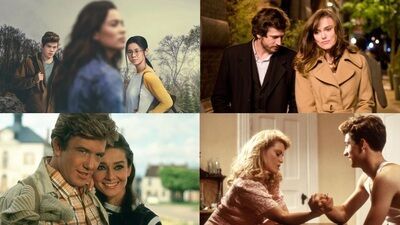As originally screened under its preferred title, the film ended in what I think was a perfect way, with the inevitable questions about “what happened after?” being addressed via charming, animated elements that were scattered among the end credits. After post-fest testing in the States proved audiences wanted something more overt (read: dumbed down), the filmmakers scheduled reshoots to capture those moments as live action, and then renamed the project more banal title and released it with little fanfare or much in the way of box office success.
This makes for a perfect under-the-radar gem to seek out, and despite the meddling after the original cut there’s still plenty to adore. The supporting cast gives some delightful performances, including Adam Driver and Sarah Gadon who decades later would reunite on screen in Michael Mann’s “Ferrari”.
Dowse captures my city of Toronto in ways that should delight any local, shooting in restaurants and venues that we actually frequent and escaping from two-block radius around Bathurst and Bloor that the likes of “Scott Pilgrim” are locked within. But the real magic comes from Kazan’s pitch-perfect take, and the first of his post-Potter films that showcases Radcliffe’s range and seemingly fearless taste in tackling a wide variety of projects.
I love this movie about love, and if the goal of any truly great rom-com is to both warm the heart as well as nourishing the mind, this is a title deserving of achieving classic status. “The F Word” is F’n great, a brilliant rumination on the awkwardness of affection and the power of a sandwich to bring people closer together. – Jason Gorber

“Two for the Road” (VOD)
There are endless movies about falling in love. But there are very few movies about staying in love. Within that small category, there is only one movie that includes two of the most spectacularly talented and beautiful movie stars in Hollywood history, and the very top tier for elegance and sophistication: director Stanley Donen, composer Henry Mancini (his favorite of his scores), screenwriter Frederic Raphael, and, for scenery, the South of France.

